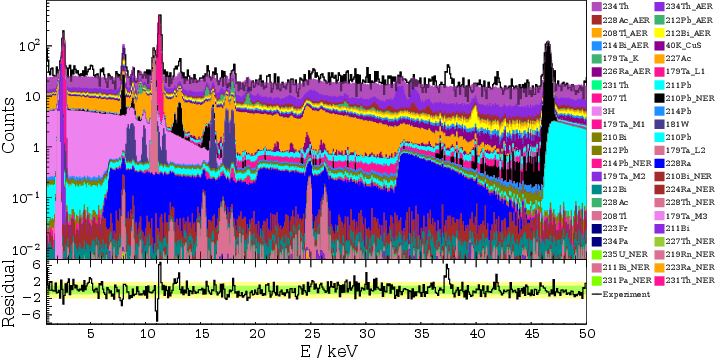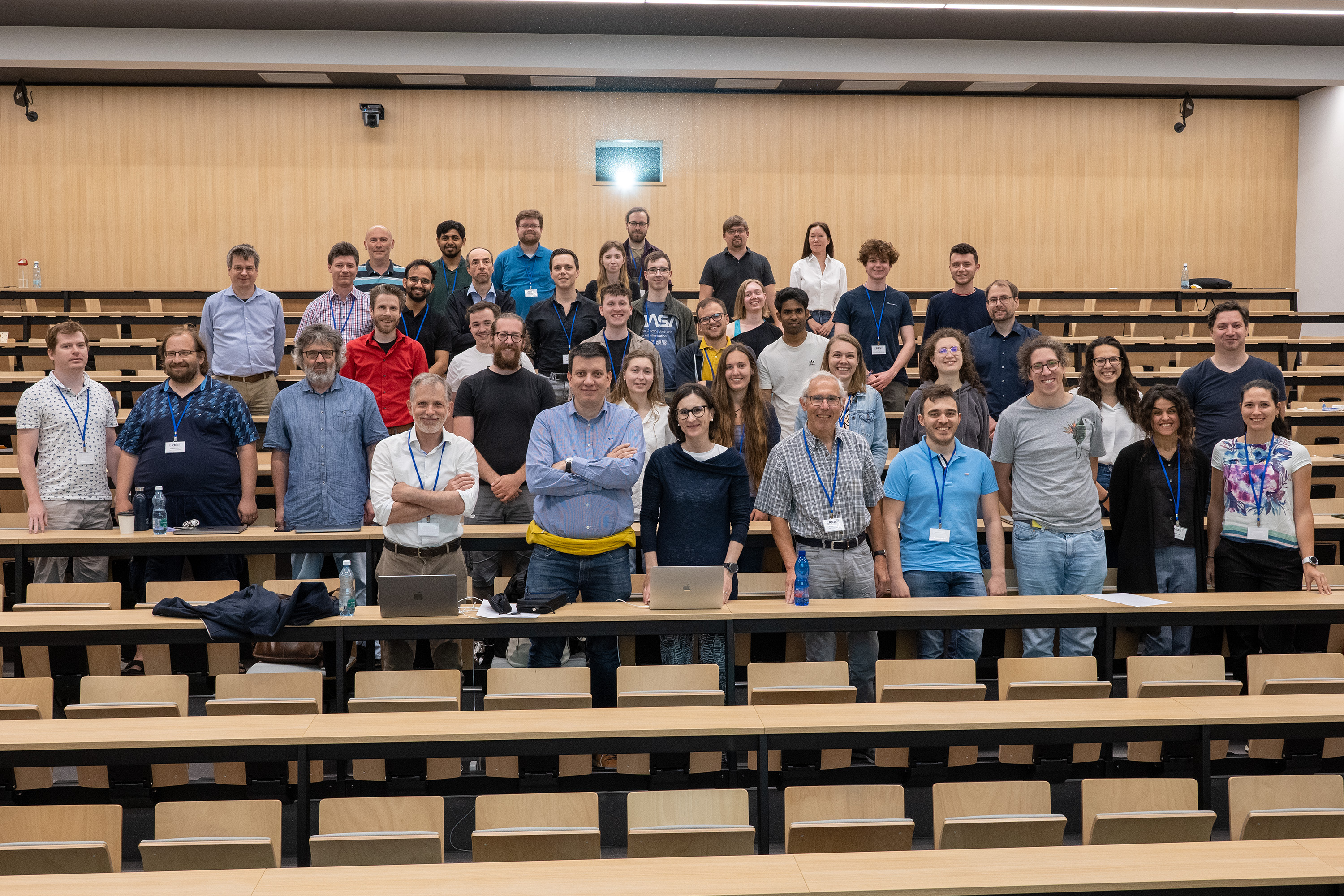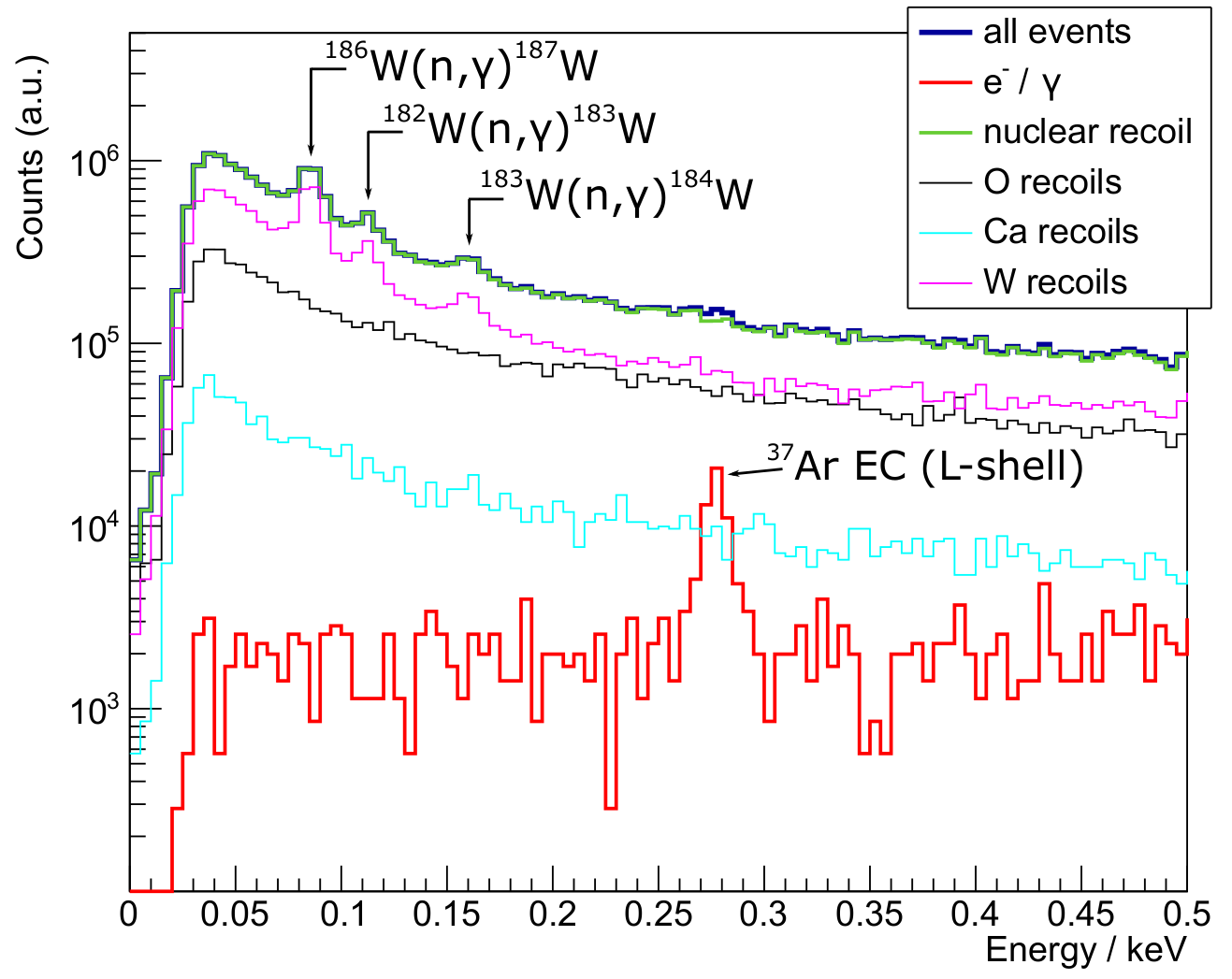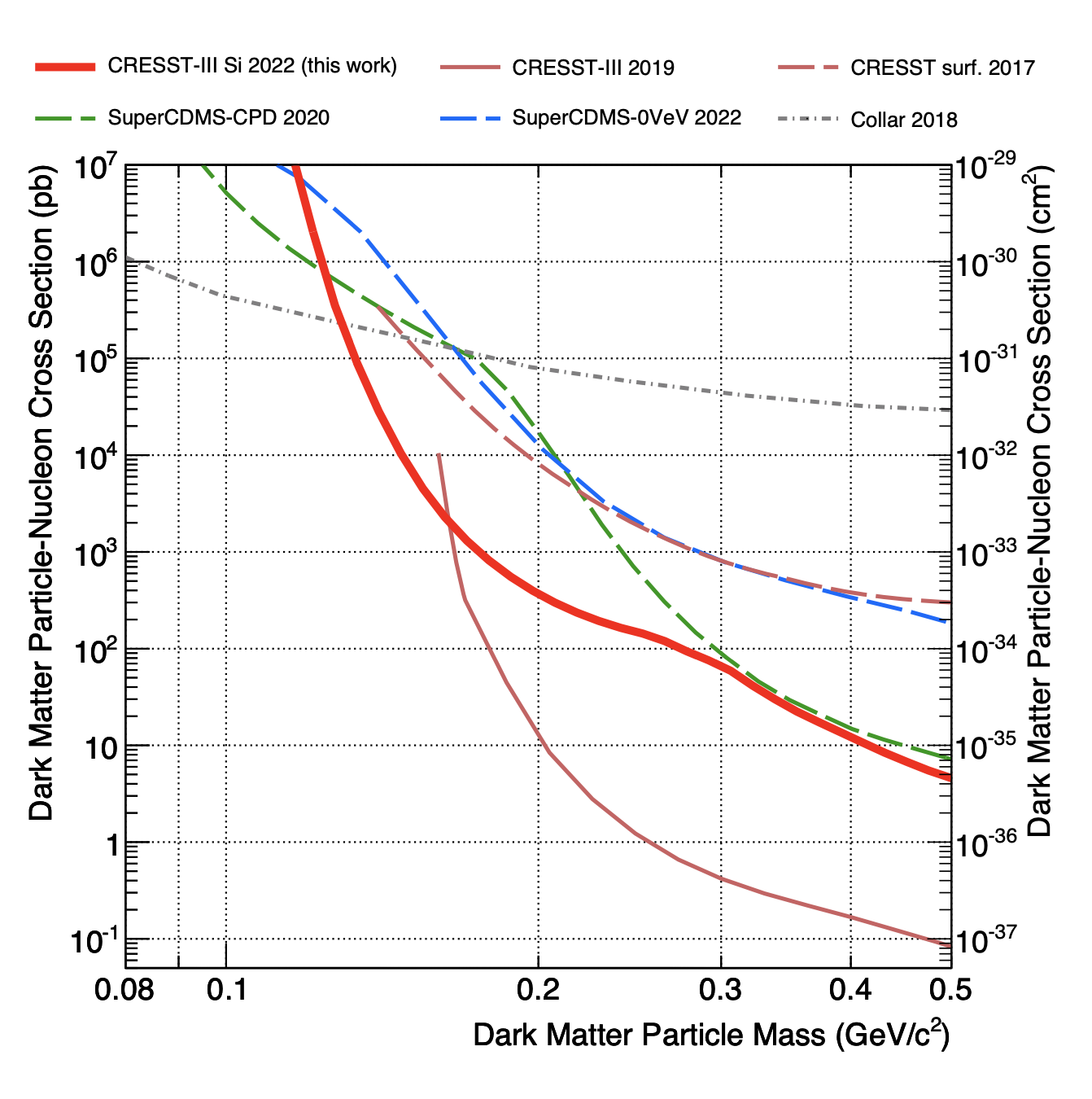High-Dimensional Bayesian Likelihood Normalisation for CRESST's Background Model
Using CaWO4 crystals as cryogenic calorimeters, the CRESST experiment searches for nuclear recoils caused by the scattering of potential Dark Matter particles. A reliable identification of a potential signal crucially depends on an accurate background model. In this work we introduce an improved normalisation method for CRESST’s model of the electromagnetic backgrounds. Spectral templates, based on Geant4 simulations, are normalised via a Bayesian likeli- hood fit to experimental background data. Contrary to our previous work, no assumption of partial secular equilibrium is required, which results in a more robust and versatile applicability. Furthermore, considering the correlation be- tween all background components allows us to explain 82.7 % of the experimental background within [1 keV, 40 keV], an improvement of 18.6 % compared to our previous method.
Submitted to EPJC (2307.12991)

Proceedings of 14th International Conference on Identification of Dark Matter
Two contributions from CRESST collaboration were published at IDM2022:
"Latest observations on the low energy excess in CRESST-III"
https://scipost.org/SciPostPhysProc.12.013
"Characterisation of low background CaWO4 crystals for CRESST-III"
https://scipost.org/SciPostPhysProc.12.031

CRESST Collaboration meeting - Spring 2023
Collaboration meeting took place in person at the Faculty of Mathematics, Physics and Informatics of the Comenius University campus in Bratislava from 12th untill 15th June 2023.


Observation of a low energy nuclear recoil peak in the neutron calibration data of the CRESST-III Experiment
Published in Phys. Rev. D: https://doi.org/10.1103/PhysRevD.108.022005
New-generation direct searches for low mass dark matter feature detection thresholds at energies well below 100 eV, much lower than the energies of commonly used X-ray calibration sources. This requires new calibration sources with sub-keV energies. When searching for nuclear recoil signals, the calibration source should ideally cause mono-energetic nuclear recoils in the relevant energy range. Recently, a new calibration method based on the radiative neutron capture on 182W with subsequent de-excitation via single γ-emission leading to a nuclear recoil peak at 112 eV was proposed. The CRESST-III dark matter search operated several CaWO4-based detector modules with detection thresholds below 100 eV in the past years. We report the observation of a peak around the expected energy of 112 eV in the data of three different detector modules recorded while irradiated with neutrons from different AmBe calibration sources. We compare the properties of the observed peaks with Geant-4 simulations and assess the prospects of using this for the energy calibration of CRESST-III detectors.

Results on sub-GeV Dark Matter from a 10 eV Threshold CRESST-III Silicon Detector
Published in Phys. Rev. D: https://doi.org/10.1103/PhysRevD.107.122003
We present limits on the spin-independent interaction cross section of dark matter particles with silicon nuclei, derived from data taken with a cryogenic calorimeter with 0.35 g target mass operated in the CRESST-III experiment. A baseline nuclear recoil energy resolution of (1.36 ± 0.05) eVnr, currently the lowest reported for macroscopic particle detectors, and a corresponding energy threshold of (10.0 ± 0.2) eVnr have been achieved, improving the sensitivity to light dark matter particles with masses below 160 MeV/c2 by a factor of up to 20 compared to previous results. We characterize the observed low energy excess, and we exclude noise triggers and radioactive contaminations on the crystal surfaces as dominant contributions.